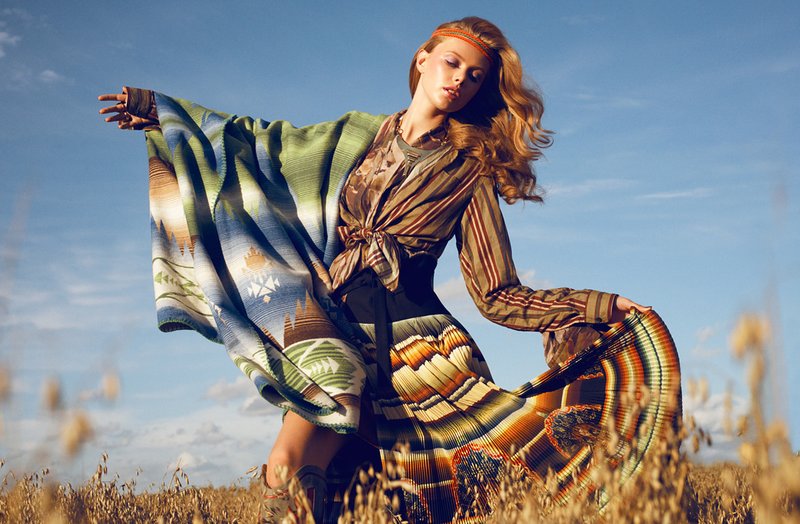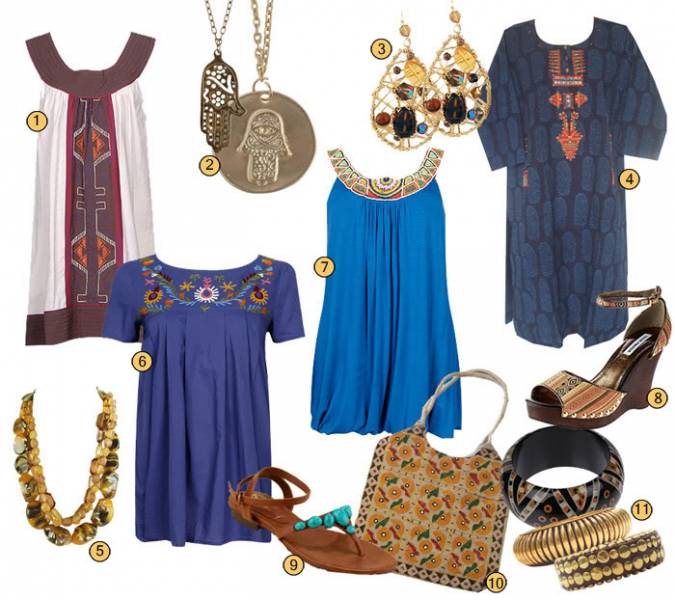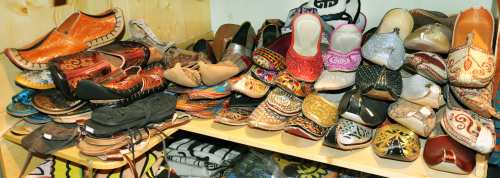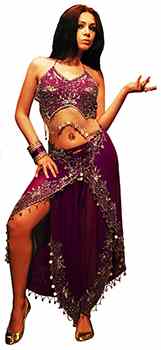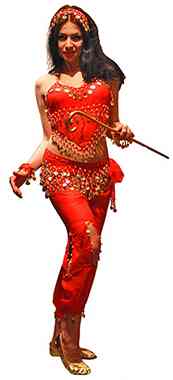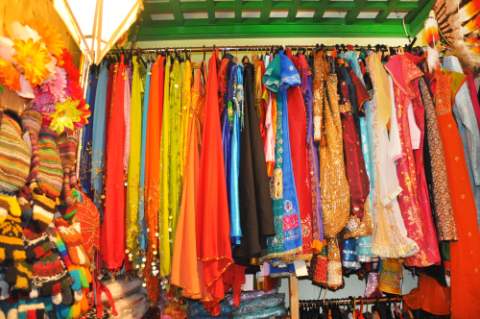Sandals in ethnic style. Ethnic wear.
Stylish ethnic wear for theme parties, festivals and everyday wear.
Concept party clothes very extensive and multi-valued, depending on the traditions of society and the accepted dress code. But what if Indian style party? Or Chinese style party? By visiting our store, you can easily find a suitable suit for yourself! We present a large assortment national clothes of China, India, youth Nepalese clothes! You can easily choose a beautiful, bright and festive outfit!
All clothing is always in stock in the store.
Clothing by country.
Clothes by type.
You will find approximate prices for ethnic clothing
There are many types of ethnic clothing in the store, only some of the samples are shown in the photo.
The store presents ethnic wear of various nationalities and countries, from China to Latin America - ethnic outfits in their ancient traditional form, For example national, traditional chinese clothing or stylized outfits in the style of the 60s - trends in the latest new “fashion” traditions, for example, Afghani pants, Aladdin or Zouaves, tunic or stylized Balinese or indonesian clothing.
The assortment of our ethnic store includes arafatkas, Aladdin pants, saris, ponchos, kimonos, tunics, costumes for oriental dance(belly dance), Chinese, Indian, Peruvian, Nepali and Thai ethnic wear, blouses, ethnic bags, shoes and much more.
Last update:
Youth stylized ethnic wear from Nepal - (July 25).
Aladdin pants made of silk, cotton - (July 25).
Indian clothes - sari, shalwar-kamis, lehnga-choli - ( July 22).
Chinese clothing - (July 23).
Costumes for oriental dance (large sizes available) - (July 25).
Warm clothes from Nepal - (May 28) .
One of the most interesting trends in ethnic clothing is the national clothing of India:
-
-
-
-
-
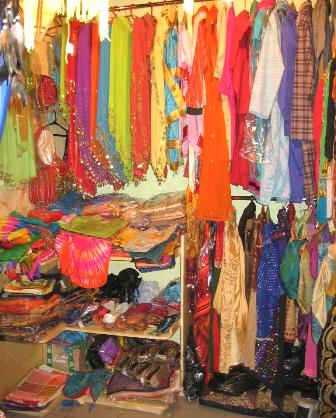
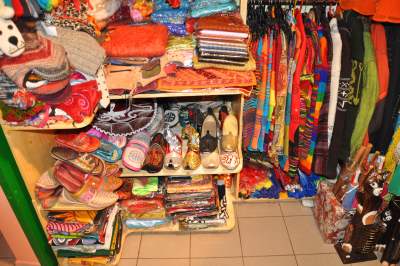
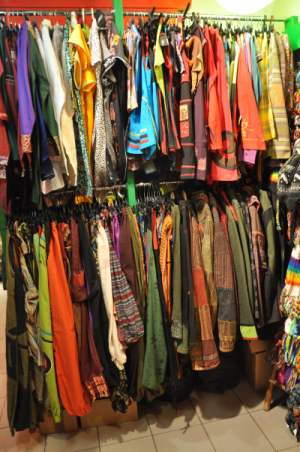
Regular silk, georgette and organza sarees.
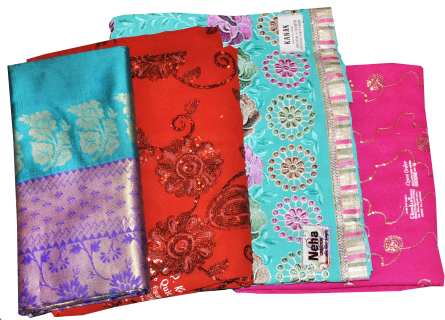
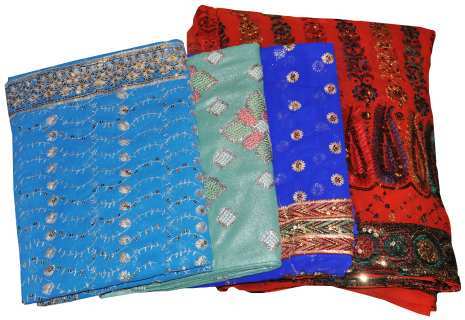
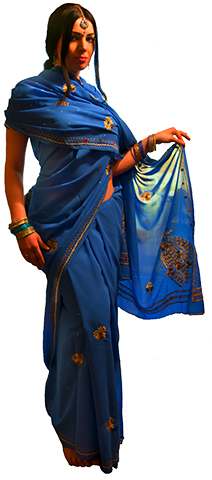 - designs and patterns are different - a very large selection!
- designs and patterns are different - a very large selection!
Price - 6800 - 14800 rub. Available in all kinds of colors, shades and color combinations. In our store you can also buy ethnic wear with embroidery, beaded and sequined designs.
Lenga-choli.
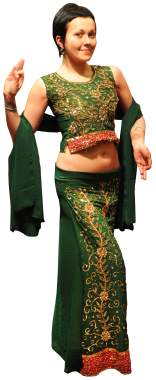
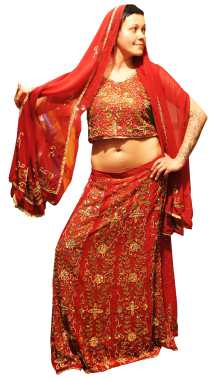
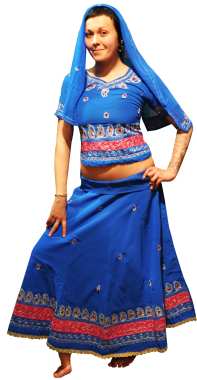
Price: from 5800r to 9800r. Assorted colors.
One of the oldest types of clothing in Indian ethnicity is the salwar kameez (shalwar kamis).
It consists of a long frock coat, knee-length, with slits on the sides, trousers narrow at the bottom and wide at the top and, as a rule, a light shawl. Homeland shalwar kamisa is considered Central Asia, but over the past centuries this elegant and elegant clothing has gained popularity not only in India, but throughout the entire Asian region (for example, Bangladesh is also considered its national clothing).
Made by Indian fashion designers. Hand embroidery is individual for each model.
![]()
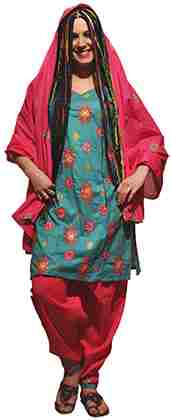
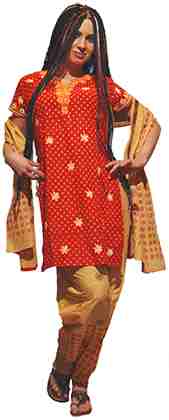
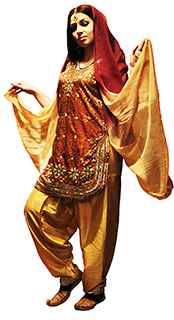
Price: from 5800r to 9800r.
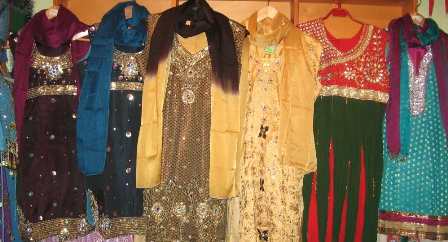
More than 30 types available!
Nepalese ethnic clothing in assortment (Nepali Aladdins, sweaters, skirts)
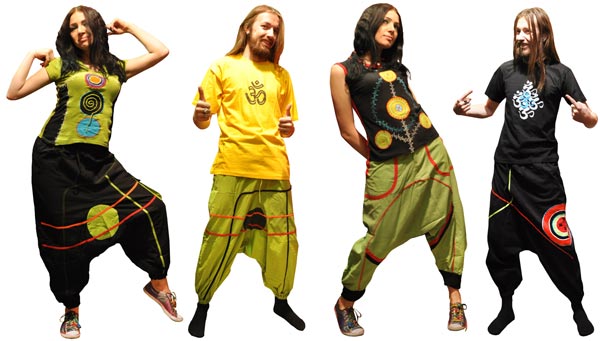
Our ethnic clothing store offers the widest range of clothing from Nepal in Moscow! All kinds of Aladdinkas, bloomers, afghanis, zouaves, sweaters, blouses, tops, T-shirts, jackets, bags of various colors, shapes and types.
If you want to buy ethnic clothes, come to us. With us you will definitely find something that you will like.
Ethnic goods store in Moscow - directions
There are T-shirts with ethnic designs on sale.
!!! The photo shows only some samples; there are many more in the clothing store.
Pants - Aladdin, Afghani, Zouave, trousers made of silk, cotton, knitwear and other fabrics - more than 40 types available from the lightest to black) - production: India, Nepal, Bangladesh, Thailand.
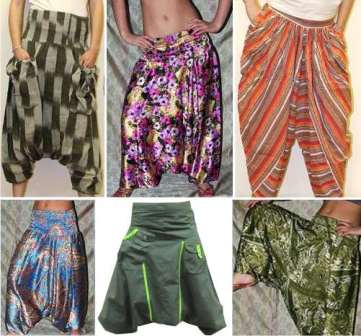
There are several differences inherent in Afghani or Aladdin pants, namely:
. loose tailoring, sufficient width of pants;
. great depth and low landing;
. ethnic decorative elements;
. seasoned style.
Price: from 1100r to 4300r.
Also on sale are other national Indian clothes - Punjabi, various skirts, cholis, scarves, sundresses and much more.
Ethnic jewelry in stock - tiki, bindi, kajal, tattoo, earrings, monists, etc.
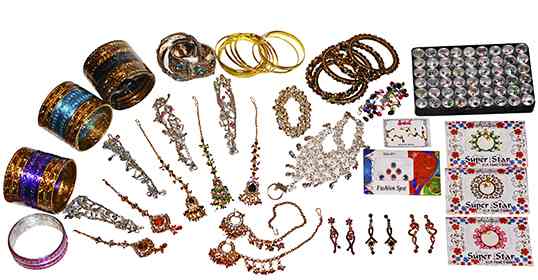
Also various bracelets for legs and arms.
Ethnic bags are different.
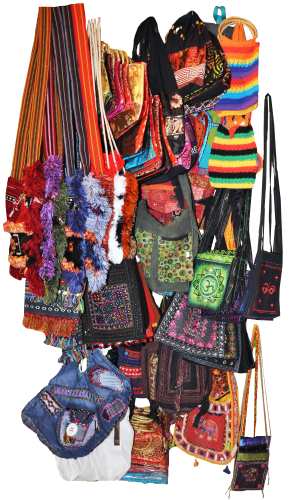
Price: from 530r to 3450r.
More than 30 types!
Also on sale are bags, wallets, key holders made of genuine leather!!!
Chinese clothes - almost any!
Something from history national chinese clothing. Traditions.
It is probably impossible to find a more conservative attitude to clothing than among the peoples of China. This is explained by the constant regulation of the styles and colors of national clothing by regular government decrees, under all Chinese dynasties from the very foundation of the empire. True, this applies mainly to men's clothing, women's dress it was rarely regulated, mainly under the Manchu and Mongol dynasties.
Any government, coming to power, immediately showed its strength and will in changing the styles of not only the clothes of officials, but also the clothes ordinary people. Chinese clothing changed constantly, but not radically. We will show general features and shapes Chinese clothes, which have always been preserved, right up to the present day.
General assortment of Chinese national clothes: robes, single and double-sided, shirts with hieroglyphs, with dragon embroidery, phoenix birds, sakura, etc. for example: short and long dresses, blouses, tops, kimonos, suits with trousers, children's clothing (from 6 months), etc.
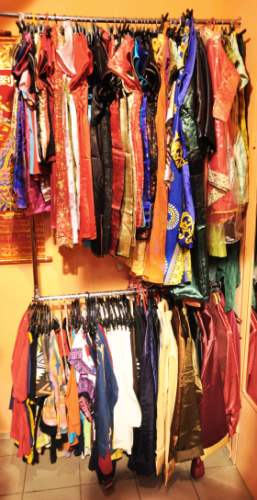 + Chinese dance fans and Chinese umbrellas are on sale.
+ Chinese dance fans and Chinese umbrellas are on sale.
Women's Chinese clothing.
Qipao or “jeongsan” is a traditional national Chinese dress.
A dress is a very special item of clothing, designed not only to add grace and elegance to a woman’s appearance, but also to create a unique, individual image for its owner.
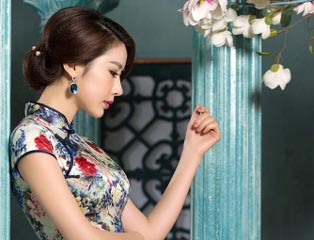
Among the variety of style solutions that fashion designers offer us in incredible quantities today, a dress in the Chinese style has become that special classic, possessing the unique charm of the mysterious East.
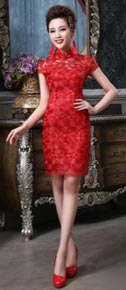
It is the traditional clothing of the Manchus, known since the Qing Dynasty. Nowadays qipao has become one of the most popular unofficial symbols of China, the national, everyday and festive clothing of Chinese women.
(cheongsam, qipao) literally translates to “long dress”, it is local dialect provinces South China- Cantona. It was there that the West first became acquainted with qipao at the beginning of the 20th century. But in fact, cheongsam has been known since at least the 17th century, when the Manchu emperors established this style as the main standard of clothing for the entire Chinese population. in those distant times, they were worn by both women and men.
Characteristic features of the qipao cut.
National Chinese women's clothing qipao is an elongated robe dress. Its cut is characterized by a folded hem to the right, a small stand-up collar and two high, hip-length slits on the sides. The skirt is fastened with traditional Chinese knotted buttons.
Initially qipao It was characterized by a loose cut and long, wrist-length sleeves. The dress was considered the standard of high Chinese culture; it reflected all the fragility, femininity and grace of Chinese women, and united the historical past and future of the country.
![]()
From the history of qipao.
At the beginning of the 17th century in the northern part of China, a very talented politician and simply brilliant military strategist, Aisinghioro Nurhaci, united the scattered Jurchen tribes into a strong “eight-banner” army, which, under his leadership, came to Beijing and overthrew the ruling Ming dynasty, giving birth to a new, Manchu Qing dynasty .
The Manchus, who represented the "eight banner" army in the most significant social strata, were called "banner people" or in Chinese - "qiren". And, according to the dynastic laws of the Qing Dynasty, after 1636, all Chinese (Han) who were part of the “eight-banner” system were required to wear qipao, that is, dressing in traditional Manchu costume, instead of national Chinese clothing. In case of violation of this law, the culprit faced execution.
At that time it looked like a loose straight dress with a shirt cut, even somewhat reminiscent of a spacious quilted robe.
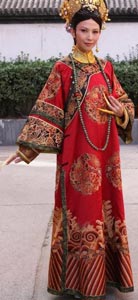
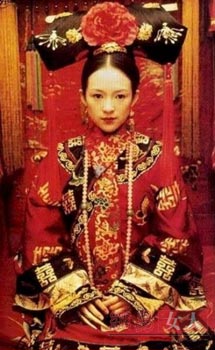
Over time, cheongsam ( qipao) have changed somewhat, and their cut has acquired a more familiar shape to us. The dresses were made from the highest quality silk, perfectly following the lines of the body, but only the hands, toes of shoes and the head remained open. The neck was covered with a high stand-up collar. This cut was consistent with Chinese culture and the basic principles of its harmony.
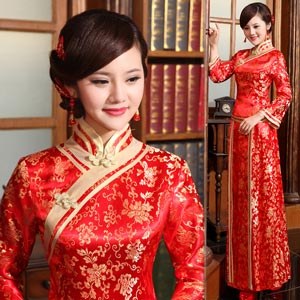
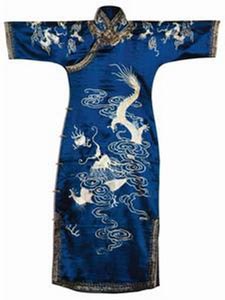
Gradually Manchurian everyday dress replaced traditional Chinese forms of women's clothing and became a recognized symbol of Chinese culture.
At the beginning of the 20th century, the Xinhai Democratic Revolution took place in China, as a result of which the monarchical system was destroyed, which accordingly made significant changes in ideology, morality and culture. Of course, changes affected both the shape and style of clothing. Struck by strict monarchical morality, Chinese women broke free, quickly “Europeanized,” and revolutionized Chinese fashion.
Of course, no one even thought of giving up qipao, but its cut was significantly updated. The long sleeves disappeared, the thin fabric began to fit tightly around the female figure, emphasizing all her graceful curves. And, despite all the sanctimonious attacks of the old conservatives, the dress continued to live, remaining the favorite clothing of Chinese women.
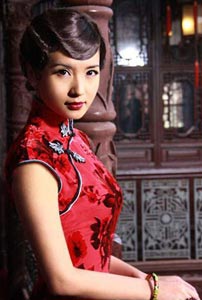
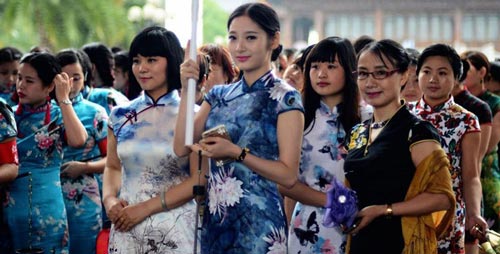
However, during the troubled years of the “cultural revolution”, the communists considered qipao a relic of the feudal-bourgeois past of the PRC, and for half a century this marvelous dress lost its exclusive role in women's clothing.
The period from the 20s to the end of the 40s of the last century gave qipao a chance for a new blossom. Europeans saw the dress. And it was then that the dress returned to the wardrobe of Chinese women and began its confident ascent to the catwalks of world fashion.
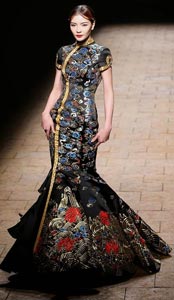
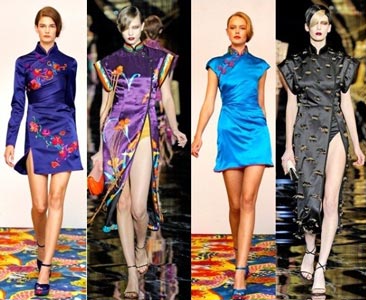
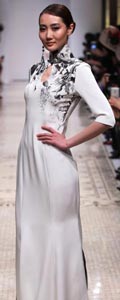
In recent decades qipao never leaves the collections of the most famous fashion designers in the world. It has become an inexhaustible source of inspiration for all fashion luminaries. What has won qipao the hearts of fashionistas all over the world? Of course, with its captivating, unique femininity, exotic flavor of the mysterious, incomprehensible East. A simple and at the same time refined strict silhouette made qipao a stylish asset of high fashion. The dress is extremely popular among Hollywood stars, show business representatives, socialites and simply among modern, fashionable women.
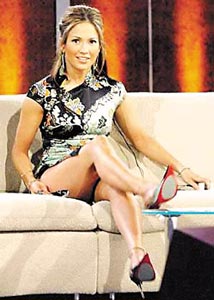
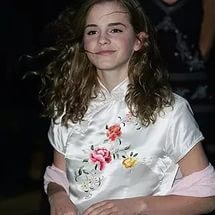
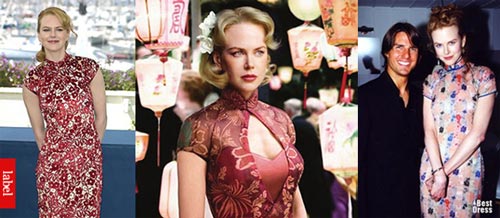
If we talk about Chinese women themselves, most of them currently give preference in everyday life to European style. However, at special moments, such as weddings, high society receptions, diplomatic receptions, national holidays, Chinese women proudly wear national Chinese dresses. qipao. It is impossible not to note that they look simply amazing in them, very elegant, graceful and feminine.
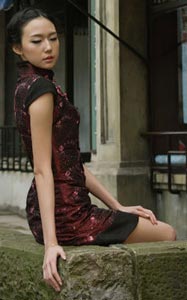
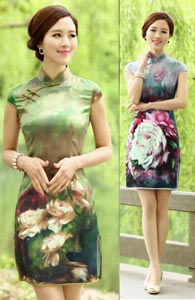
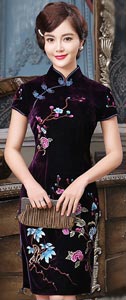
How and with what to wear the national Chinese dress qipao.
So, you have finally decided to join the ranks of happy owners of seductive qipao, but the dress is not everything. For this outfit you should choose suitable jewelry and other accessories:
Under qipao Flesh-colored tights are best;
Linen and cotton shortened qipao It is acceptable to wear with straight or tapered trousers or jeans;
The best shoes for this dress are: classic shoes with medium heels;
Beads, pendants, chokers and other neck decorations are not worn with a qipao; the decoration is a traditional stand-up collar;
But almost any earrings are suitable for such an outfit, the main thing is not to forget about the grace and subtlety inherent in Chinese culture as a whole;
Bracelets on your arms are also welcome, but again, don’t forget about the general style;
In addition to this outfit, you can choose a traditional Chinese bag with bamboo handles;
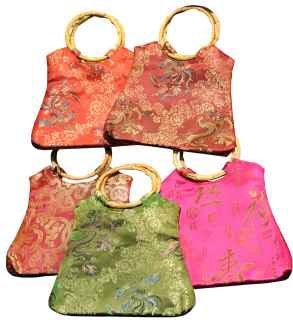
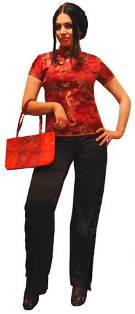 Chinese bags - price: 530 rub.
Chinese bags - price: 530 rub.
A good accessory would be a small fan or a small sun umbrella.
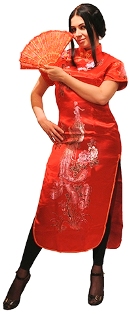
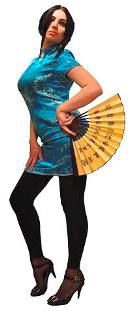
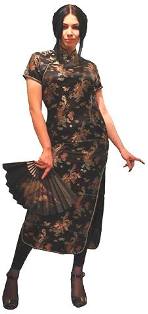
In our ethnic clothing store you can buy qipao various colors and sizes!
Price: 3100 rub., 4100 rub.
There are always dresses, blouses, tops in Chinese style on sale, almost any colors and styles.
Men's national Chinese clothing. Suits, jackets. Costumes for practicing tai chi, qigong, yoga.
Jacket ( kurma) or caftan (below the hip), (half-caftan) - Gua Tzu (Phao Tzu), - Magua Tzu(short), fur coat (caftan lined with fur) - phiao, overshirt - Shan Tzu.
General basic clothing details.
Chinese single-breasted shirt with five eyelets, wide sleeves and three cutouts on the sides and back, sometimes with a stand-up collar - Lingzi.
Cuffs are usually worn by civil servants.
The clothes of officials can be cherry-colored, with embroidery of animals or birds on the chest and back, which ones depends on the rank.
The predominant color of the kurma is black, the caftan is any color except green and scarlet (female colors), most often blue.
The outer shirt is usually lemon or blue for winter and white for summer.
Underwear jacket - traditionally used as a home or Summer clothes. The left floor is at the top, from the neck buttons it goes under the right armpit and goes down, fastened with buttons along the entire length.
Pants are regular straight pants made of cotton or silk with a belt.
Robes - worn at home, the colors have national colors and designs and depend on the class, they belong to men's clothing, but sometimes they are also worn by women.
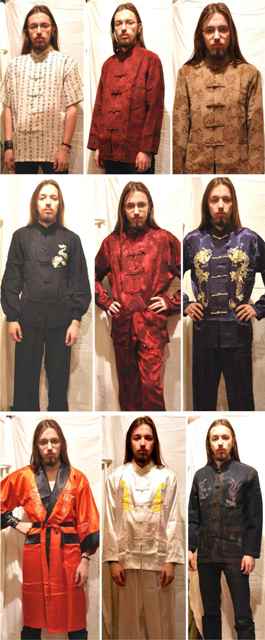 - more photos of Chinese clothes!
- more photos of Chinese clothes!
Children's Chinese national clothing is made according to the adult type - for girls - from 2 years, for boys from 6 months. and up to S - size.
Chinese umbrellas - different colors.
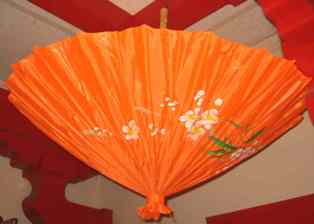
Price: from 480r to 680r.
Different kinds tunic with ethnic patterns (long, short, with or without a belt, with garters). The variety of drawings is more than 15 types.
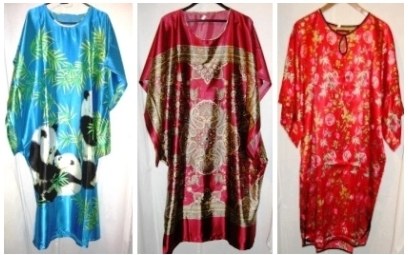
Price: from 2100r to 3100r.
Also available for sale Bali ethnic clothing- pareos and blouses, different styles and colors - more than 20 types.
Ethnic shoes. Oriental shoes
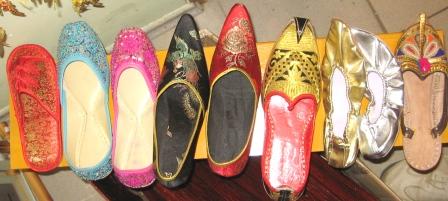
Also on sale are shoes made of genuine leather and felt (Mongolia).
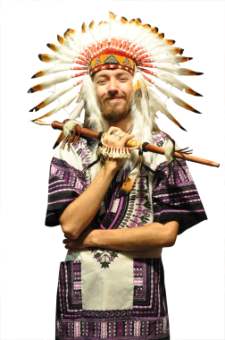
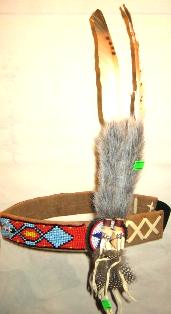
Indian hat. Price: 4850r and 1450r.
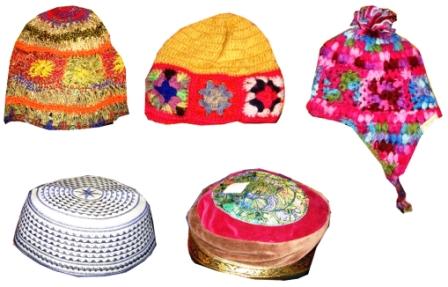
- Indian turban.
A large selection of belly dance costumes - with skirts and trousers - almost any colors, styles, sizes, different price categories.
By visiting our ethnic clothing store, you can buy a belly dance costume and various accessories: belts with coins, bracelets, scarves, canes, ankle bracelets and much more. The store's assortment ranges from simple costumes for learning belly dancing to ornate costumes for performances.
Price: from 2100r to 6300r.
There are children's costumes for oriental dance from 6 to 10 years old - with trousers, from 10 to 14 years - with trousers or a skirt.
Indian and other ethnic dance jewelry, earrings, rings, dance canes, dance fans, bindis, tattoos, kajal, tiki, shoes and many others.
A little about ethnic clothing.
Ethnic clothing or National clothes is an indispensable attribute of any society. Having gone through centuries of experiments, each people chose the most comfortable type of clothing for themselves, depending on the climate, occupation, available materials, craft culture and other natural factors. Later, with the development of society, clothes began to be made not only for protection from climatic troubles, but also as an object of aesthetics, adding elements decorative creativity, where each nation emphasized its identity and individuality. Modern fashion designers, instead of reinventing the wheel, have long been using ethnic clothes in their creative fantasies, constantly studying and detailing the entire anthology of national clothing different nations, using it in their new collections stylized suit.
Ethnic clothing will always emphasize your individuality and attractiveness, while introducing the subtle charm of a unique aesthetic taste. You will find few things in stores that can so subtly express your originality and charm, without the colossal expenditure of labor or money, as ethnic style clothing. Currently ethnic wear also moved on and took a worthy step in the category youth clothing. Ethnic style clothing will always be one of the most wearable items in your wardrobe, both men's and women's, especially in combination with ethnic jewelry .
Currently ethnic wear, for example in Moscow, is used not only for wearing on the street or at home. She happens to be compulsory subject to practice some eastern practices ( yoga, tai chi, reiki etc.), and, naturally, is used for training in many styles of martial arts. Also ethnic wear, in this case Chinese and Japanese, decorates the ceremony of drinking tea and preparing and serving sushi.
Professional tailoring of any ethnic clothing.
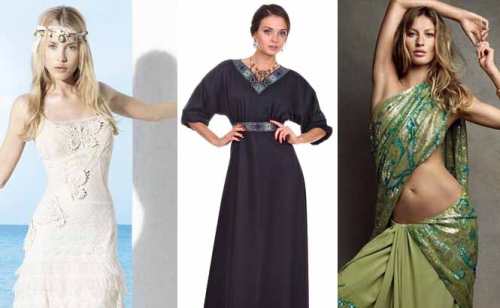
Custom made ethnic clothing- more details.
If you want to buy in Moscow ethnic clothes or ethnic style clothes, at the same time supplement it ethnic jewelry, or buy costume for belly dance (oriental dance), or just visit ethnic store in Moscow, then in the contacts section the detailed address of the store, map and how to get there are indicated. Microdistrict "Mitino" - the first multi-storey building at the exit from the Moscow Ring Road or 300m from the Volokolamskaya metro station.
This fashion emerged at a time when almost the entire world was going crazy for minis. A rather small part of the population reacted with indignation to this mass insanity and opposed short, constricting clothes to long and loose clothes that were more natural for the body. The hippie movement was international - it was joined by representatives of different nationalities, each of which brought local flavor to it. The new direction was of keen interest to fashion designers; they appreciated its non-triviality and internal diversity. This is how the ethnic style of clothing appeared - a real find for those who want to be different from others.
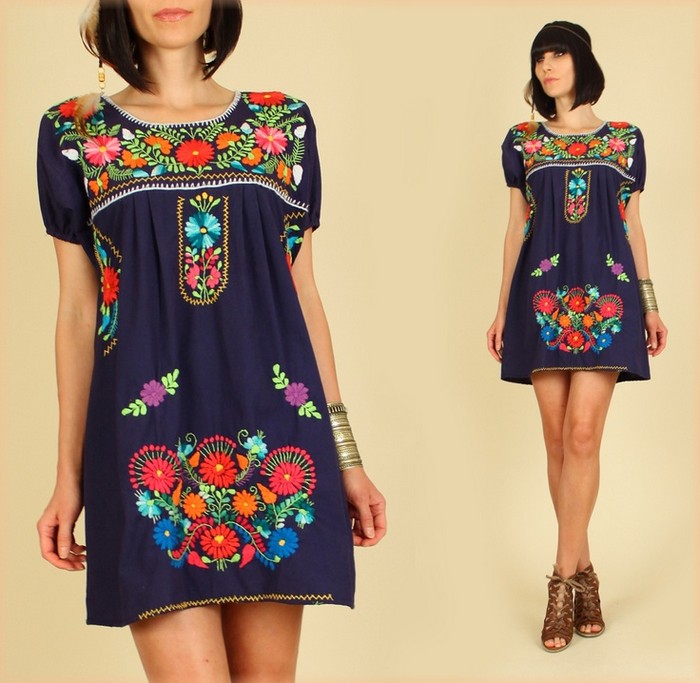
Fashion direction
The great couturier Yves Saint Laurent was the first who decided to shock the public by placing the clothes of “wild” peoples on high podiums. He created collections in African, Peruvian, Chinese and Russian styles. Fashionistas were shocked by the short cocktail dresses, woven from available materials: wooden beads, flax fibers and dried palm leaves. And the screaming primitive colors and decorations made from animal fangs made them clutch their hearts. However, the most daring ladies immediately felt all the advantages of such a wardrobe. In order to attract attention, to emphasize your individuality, the best way you can't imagine.
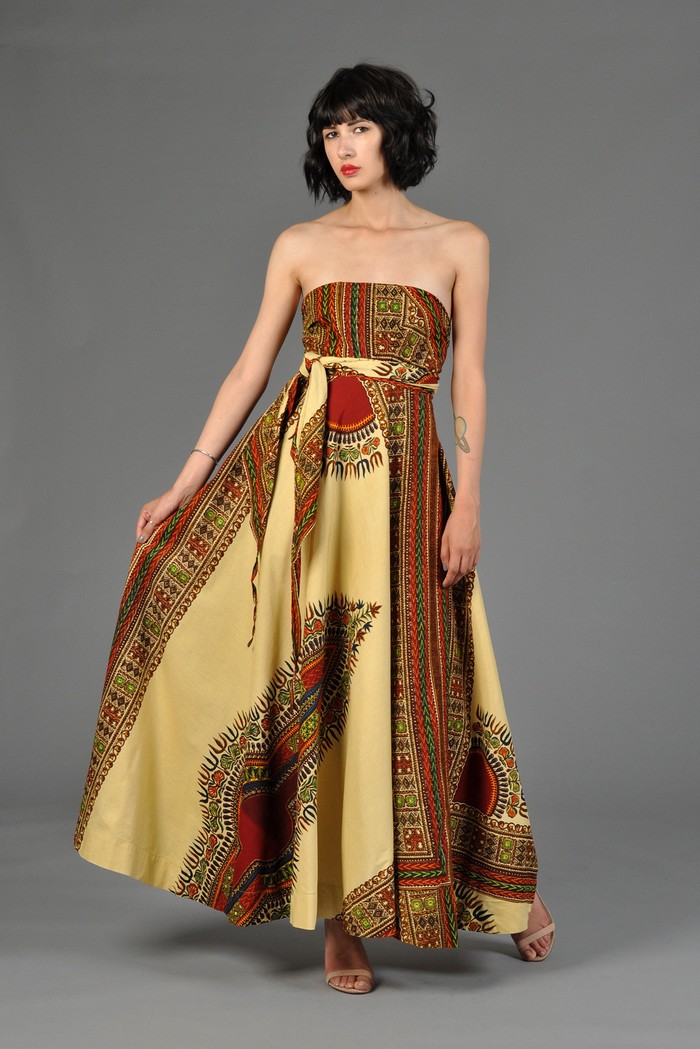
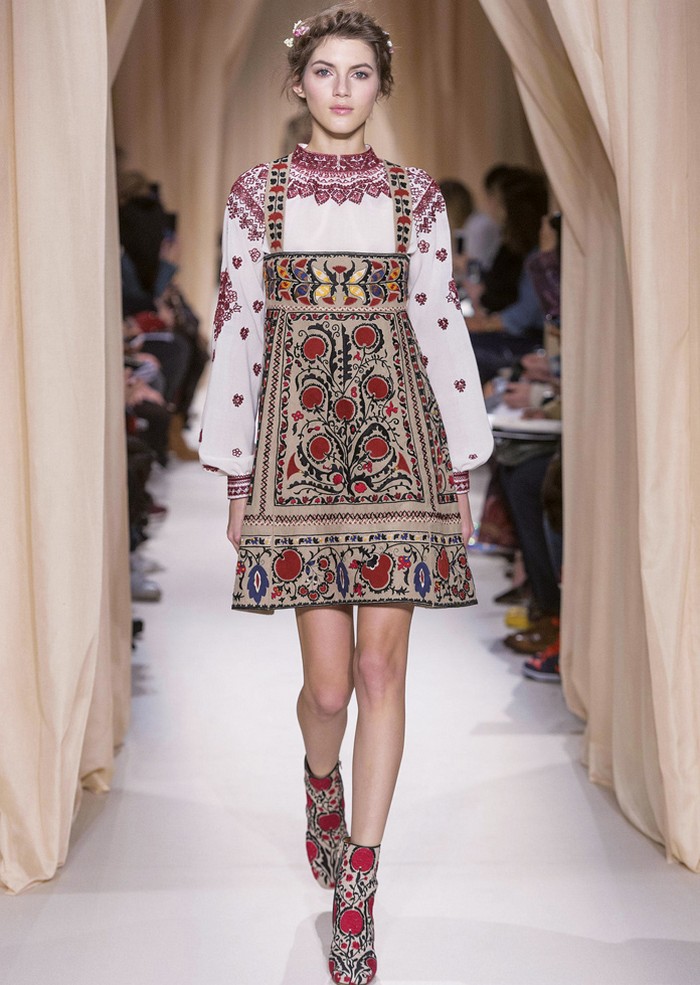
The example of Yves Saint Laurent turned out to be contagious. Other fashion designers appreciated the promise of the direction he had discovered and decided to try their hand at it. Today, not a single Haute Couture Week is complete without new collections with ethnic motifs. Stylists “play” with numerous elements and details of various national clothing, constantly offering fresh, original solutions.
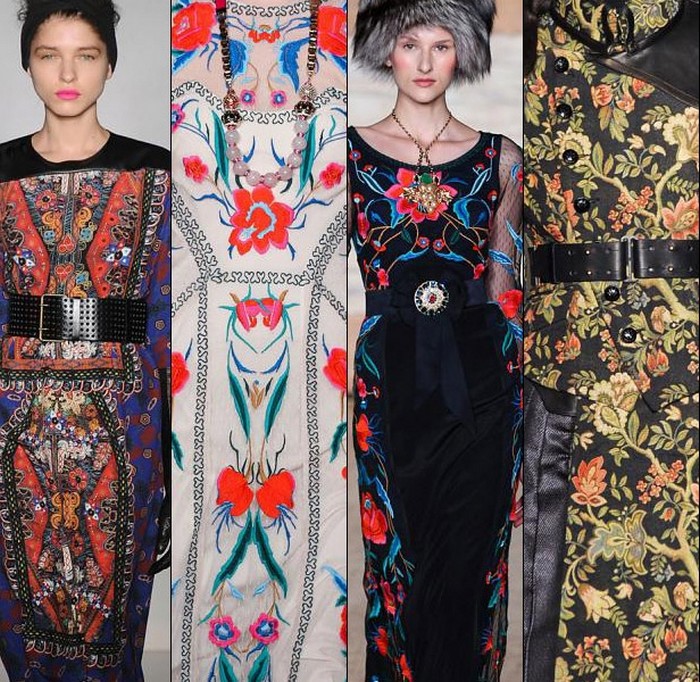
Floral motifs are actively used by fashion designers, as it always looks original.
Ethnic style is international. It incorporates the characteristic styles, prints, colors and decor of various peoples inhabiting our planet. Therefore, several national subspecies are distinguished within it:
- Greek
- Egyptian
- Indian
- African
- Japanese
- Chinese
- Slavic
- Indian
- Scottish
- Scandinavian
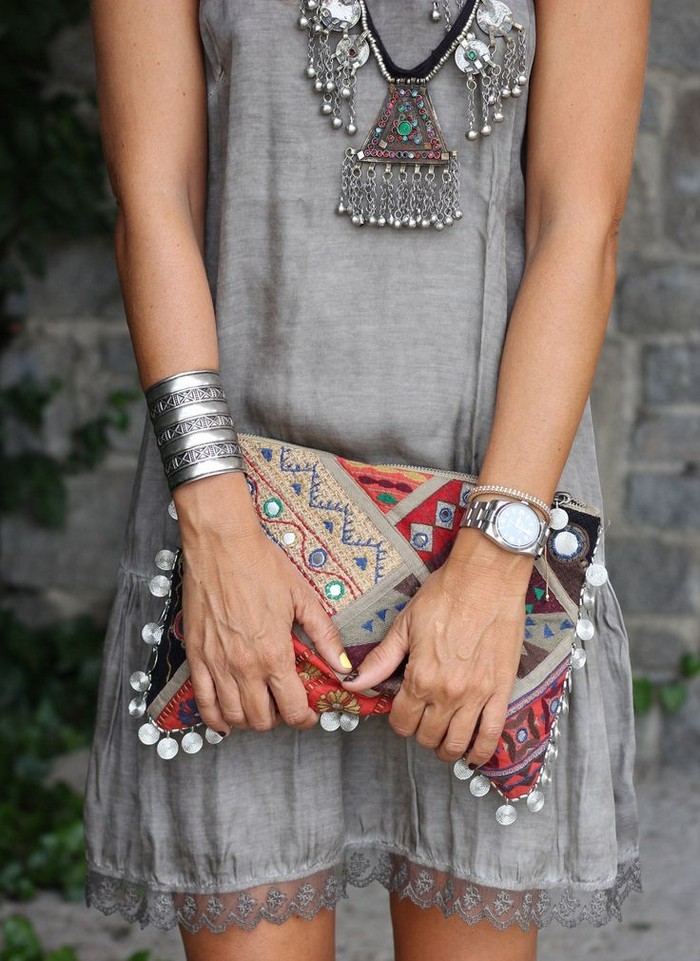
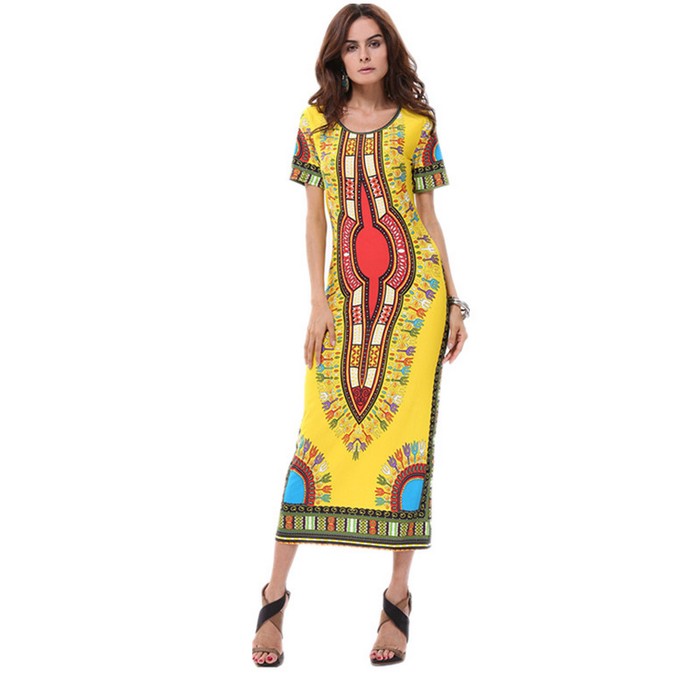
Moreover, depending on climatic conditions each of these styles received its own “specialization”. For example, Greek and Indian are widely used in creating summer sundresses And evening dresses. And Scandinavian has taken a strong place in the winter wardrobe.
All microstyles today are used not only in their pure form - certain elements from them have spread widely throughout the fashion world and are no longer perceived as something out of the ordinary. A sweater with deer, a wrap dress or sandals with a fastening on one toe have become as commonplace as a sheath dress and a pullover. Nobody remembers their Norwegian, Japanese and Greek roots anymore. But at the same time, ethnic details are still able to add an interesting twist to any image, making it distinctive and original. For example, leopard print, borrowed from African style, successfully plays this role.
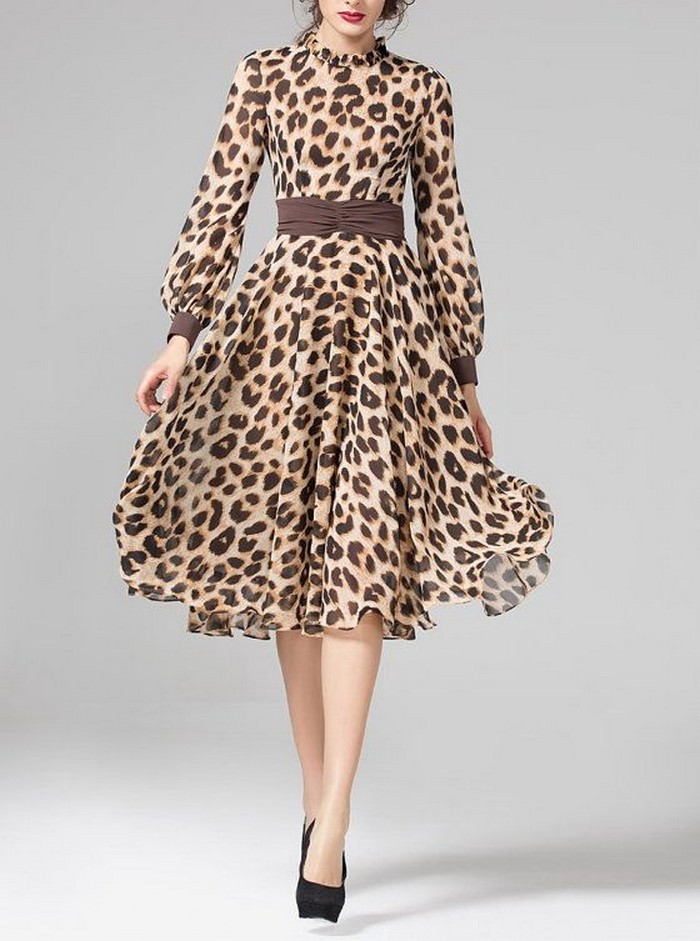
The characteristic element of the African direction is very popular among designers
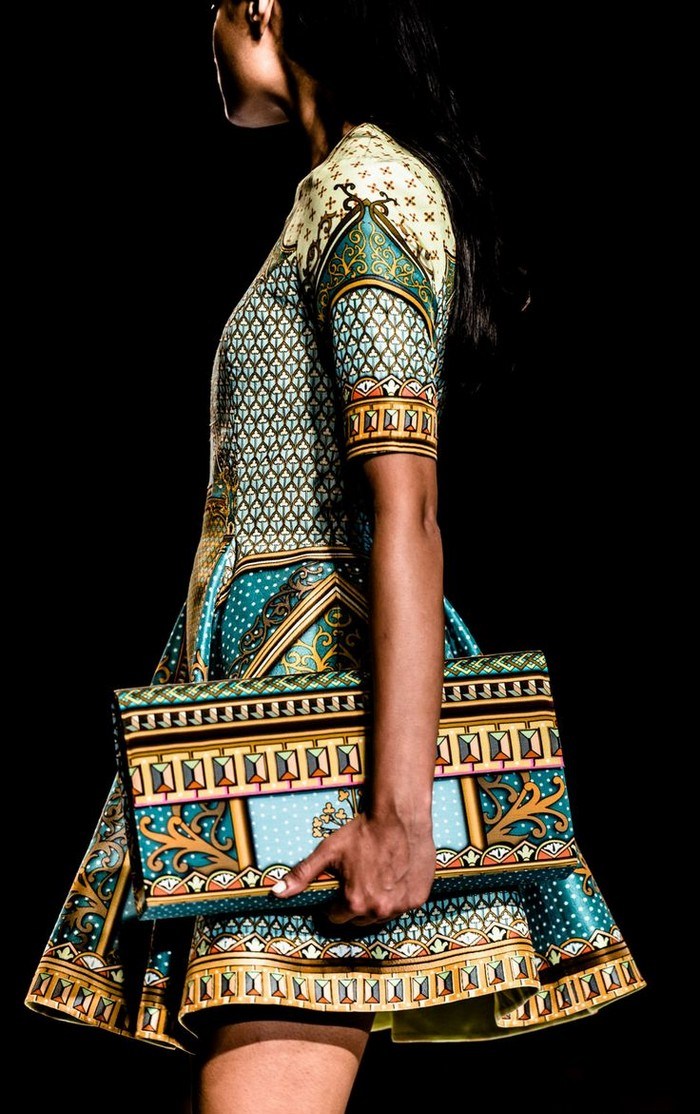
Bright geometric prints are very relevant for the warm season
Ethnic clothing options
When thinking about creating an ethnic wardrobe, it is worth carefully studying the characteristic features of a particular microstyle to determine what you like best and what looks will suit you. All these trends coexist under the roof of ethnicity - and by choosing any of them, you will find yourself in the trend. In addition, today's fashion values individuality and does not require adherence to the mainstream, that is, doing like everyone else. Having gone through the waves of mass passion for Japanese, Indian and Scandinavian themes, fashion science now invites women not to “get hung up” on one thing, but to try different options, never tire of striking others with new images, to search and find themselves.
So, the features of ethno-microstyles:
- Sultry African. He was at the top of the list because he is now at the peak of popularity. It stands out with bright animalistic and geometric prints, as well as catchy decorative elements - tassels, ropes, and so on. Things “from Africa” are intended to be worn exclusively in the warm season, since they are sewn using light fabrics, and their styles are loose and flowy. But “animal” prints - zebra, snake and leopard - have confidently settled on demi-season and winter clothing. It is interesting that African exoticism suits almost any type of appearance - blondes, brunettes, and redheads, since its color range is extremely wide. Ideal for a seaside holiday and traveling to hot countries.
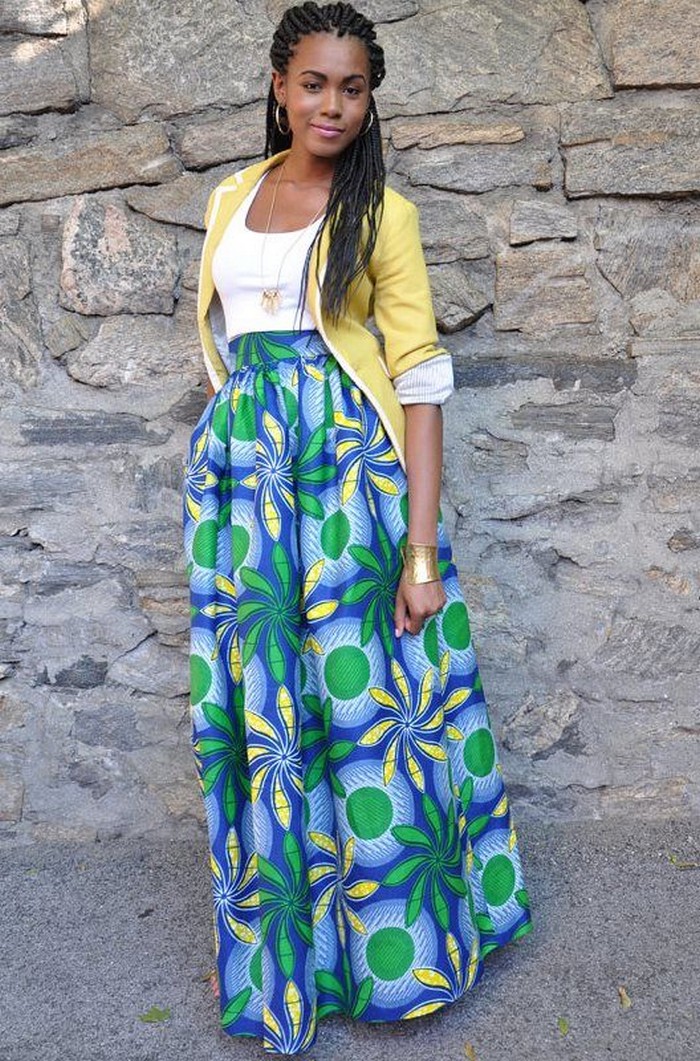
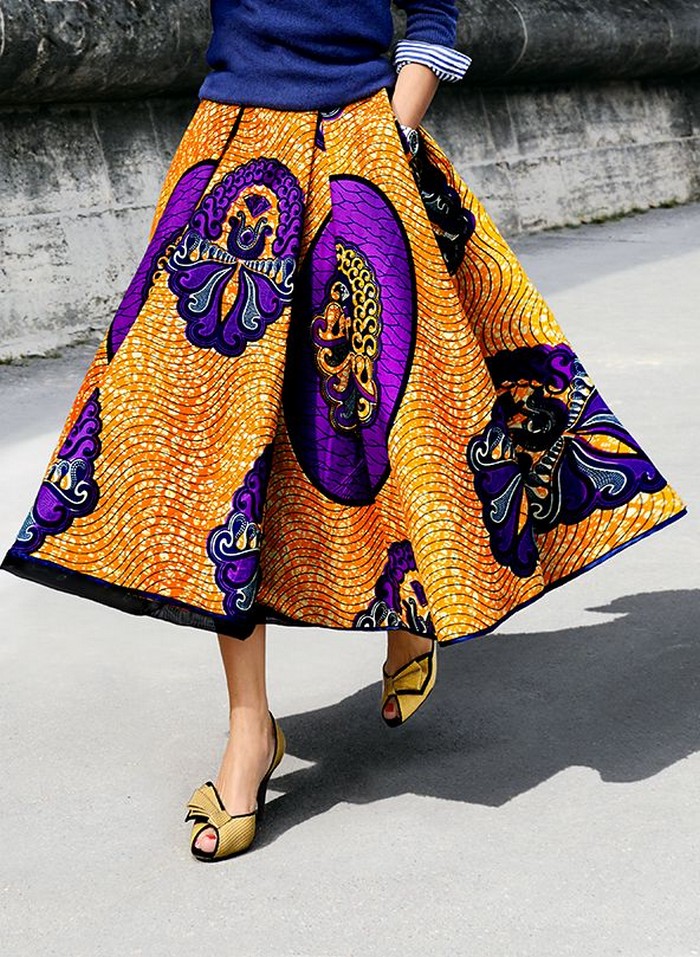
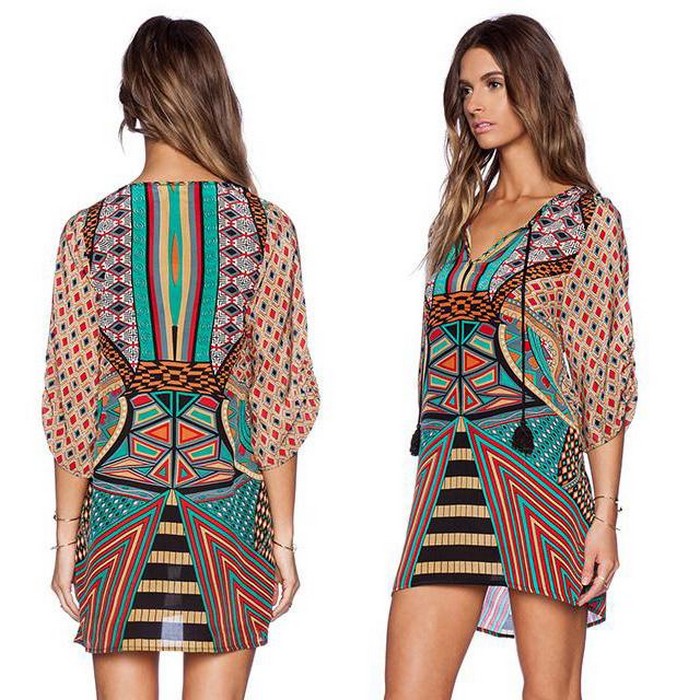
- Divine Greek. The complete opposite of the previous direction. No flashy prints or baggy styles. Ethnic dresses in the Greek style, like the columns in the Greek hall, are distinguished by beauty, grace and simplicity. Authentic option - White dress to the floor made of flowing fabric with drapery - today it has numerous fashionable variations (with a high waist, deep neckline, open shoulder, etc.). Wearing such an outfit, any woman can feel like a goddess. Exactly any - because many flowing folds will hide imperfections and gently emphasize femininity. A great option for an evening out.
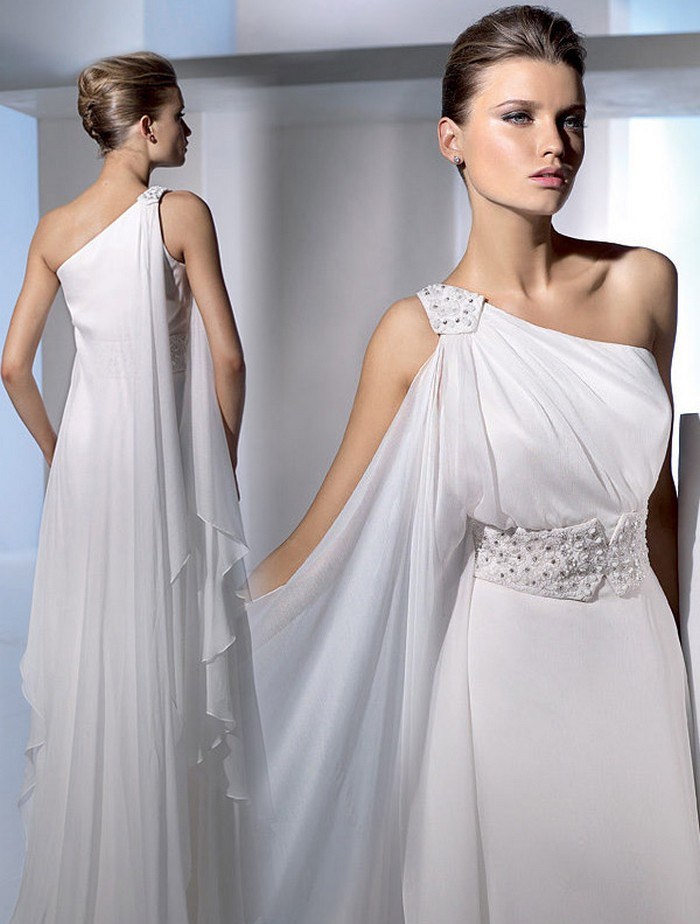
- Sophisticated Japanese. To emphasize the grace of the girl, the emphasis in Japanese clothing was on her thin neck and waist. Hence the special cut - V-neck, wide belt, loose sleeves, which we see in a kimono. Initially, only three colors were used - black, white and red. But over time, the color range has expanded. The characteristic print is sakura flowers. The kimono shape is widely used in modern dresses - mainly wrap models. Moreover, the length in them can be very different - up to mini - unlike classic version to the floor The fabrics chosen for sewing are usually soft, flowing and shiny. Initially, kimonos were made of silk.
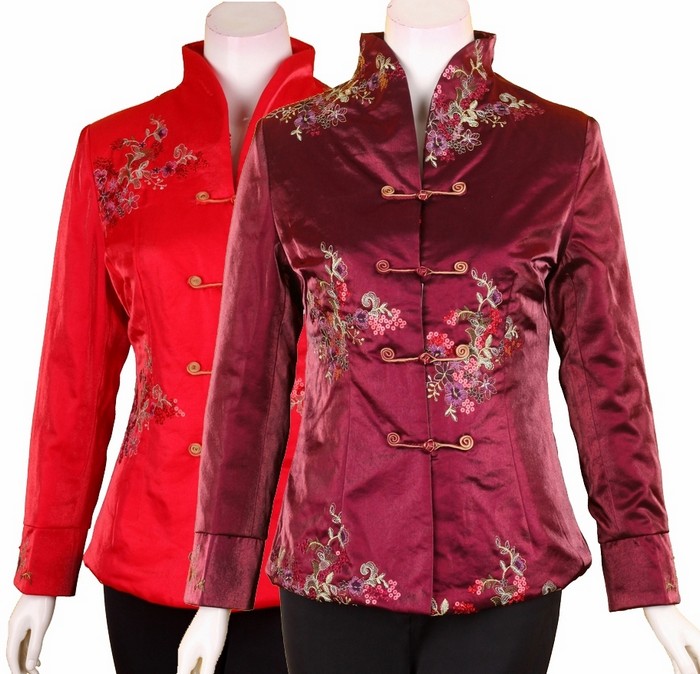
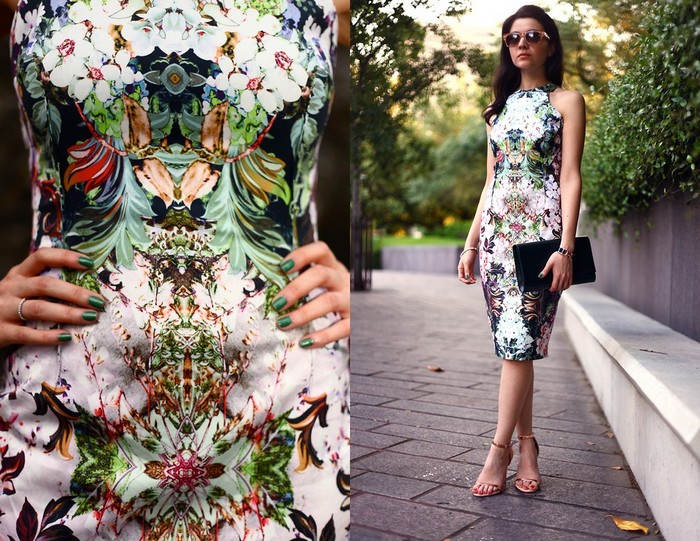
Looks very good on fragile women.
- Elegant Chinese. Somewhat similar to the previous microstyle, probably because it is also designed for thin women vertically challenged with small breasts. A typical representative Chinese national clothing in the women's wardrobe is a narrow straight dress with a stand-up collar made of silk and other delicate fabrics. Local women often wear a cotton set of a long shirt with the same stand-up collar and straight pants. The most widely used colors in Chinese clothing are red, gold and white. Common prints include hieroglyphs, dragons and large beautiful flowers.
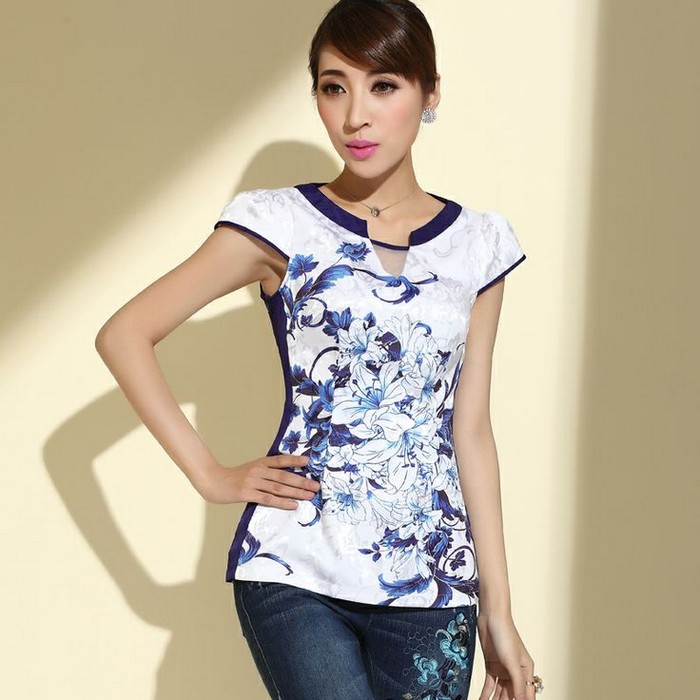
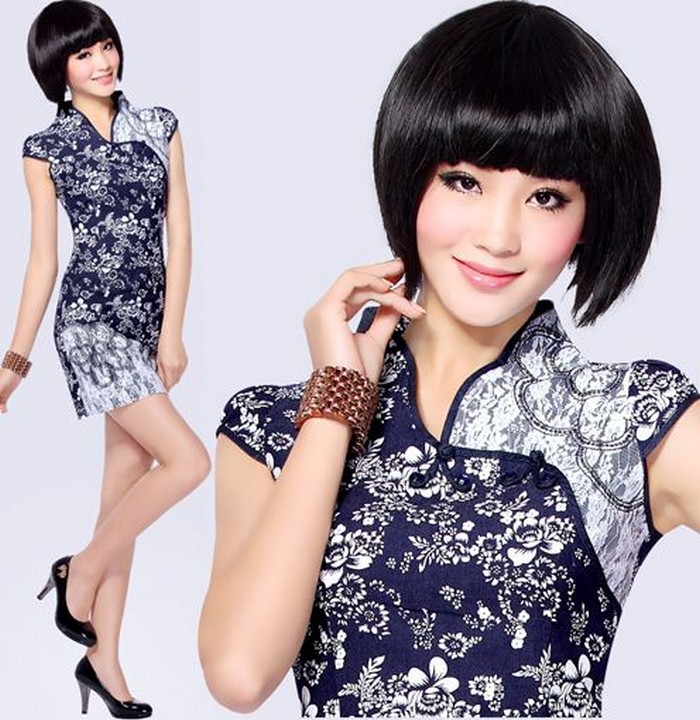
Stylish dress for slender fashionistas
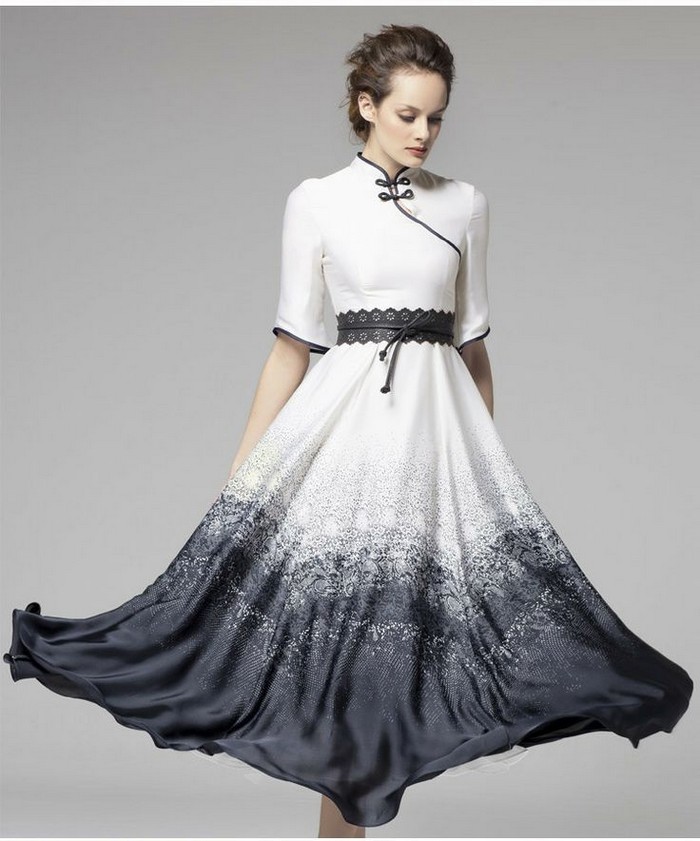
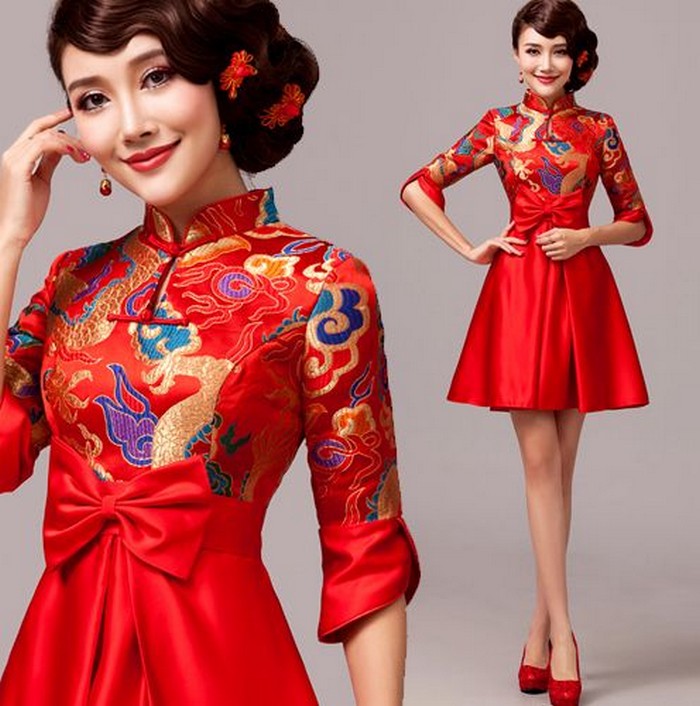
Ethnic clothing style 2016
I would like to continue the conversation about national trends in ethno-style in the context of their relevance in the new fashion season.
The Slavic style remains in demand. This concept combines the features of Russian, Ukrainian, Belarusian and other clothing. Slavic peoples. Of course, each of these trends has special national features, but there are also elements common to them: an abundance of embroidery, large flowers, ornaments, linen fabric, lace and fur. Fashion designers build on this, offering new models in this style. Along with Russian colorful scarves and Ukrainian embroidered shirts, a new trend is also very popular - T-shirts with Belarusian red ornaments on a white background.
Ethnic is a type of clothing that reflects the main features of a national costume. From this we can conclude that the roots of the ethnic trend go deep into the past.
When creating this kind of thing, designers must know the peculiarities of the cut of clothing of a particular nation, as well as the fabrics from which it was made, and take into account elements of decor and embroidery.
Today, ethnic wear is complemented with modern silhouettes and original designs, resulting in a stylish piece.
History and style features
Ethnic style of clothing is a completely new phenomenon, and, nevertheless, this style has ancient roots, because almost all ideas are taken from the past. In ancient times, clothing gradually acquired cultural significance. Time passed, one generation replaced another, clothing and way of life changed.
IN different times V different places National costumes appeared and changed. This happened because at some point clothing was no longer considered solely a means of escape from cold or heat. Clothing began to be considered a cult item that influences a person’s life.
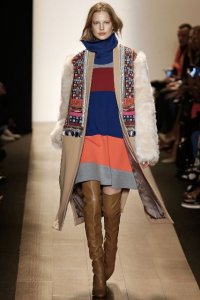
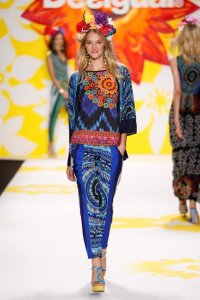
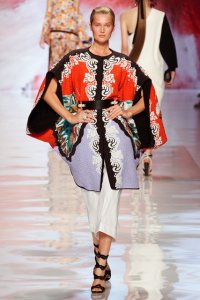
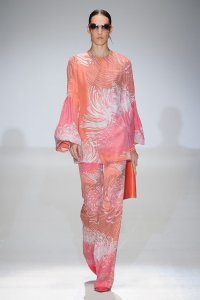
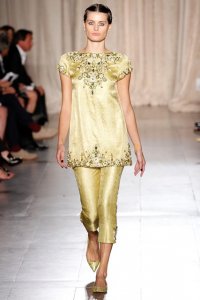
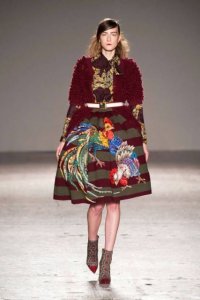

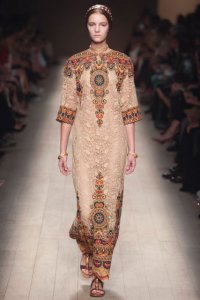
People believed that embroidery on clothes helped them communicate with the gods and nature itself, and all kinds of ornaments and decorations were endowed with the function of scaring away evil spirits. In addition, with the help of a wardrobe, people could show others their belonging to a particular social status.
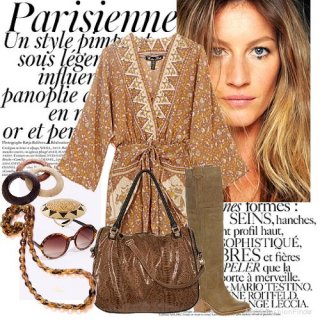
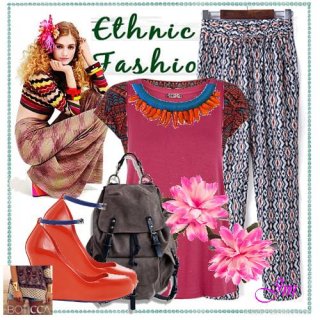
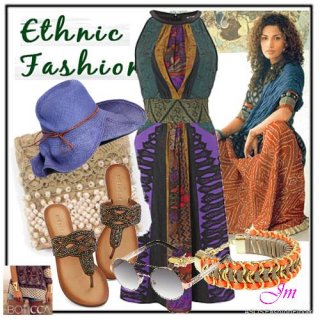
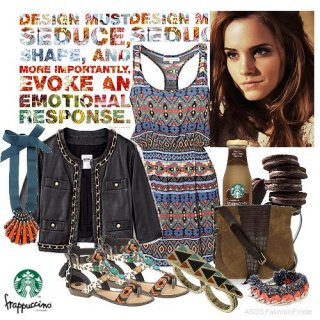
Ethnic style in its modern sense originated in the sixties. It was then that the hippie movement gained popularity. Representatives of this subculture preferred things from natural materials, decorated with ornaments of various national costumes. Clothing was loose and comfortable, and the mixing of different ethnic motifs signified the equality of all people and nationalities.
Ethnic style clothing
Clothes of this direction, be it ethnic dresses or other wardrobe items, have a number of characteristic features. This, for example, is maximum convenience. Ethnic clothing is mostly loose-fitting and made from natural fabrics such as linen and cotton.
Another distinctive feature is the originality and brightness of things. This style of clothing is most often preferred by young people. Most of the clothes are for everyday wear, and are also replete with a variety of ornaments and various bright elements.
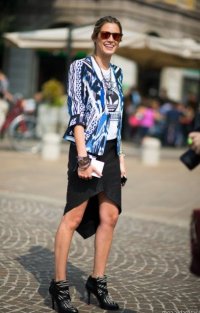
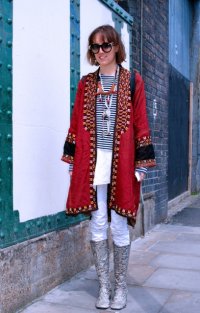
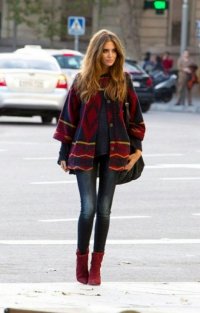
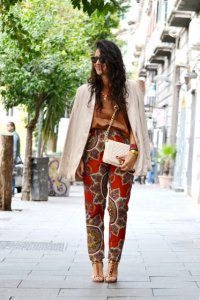
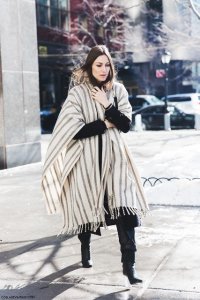
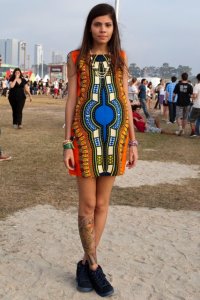
Often Indian and oriental patterns are used in such clothes, and the most unusual and eye-catching accessories are selected. In general, ethnic style embodies a mixture of Asian prints and colors. Things are decorated richly, in an oriental bright and rich way. But it doesn’t only appear in this type of clothing. Moroccan motifs are often found. African style fits well into the ethnic image, making the set individual.
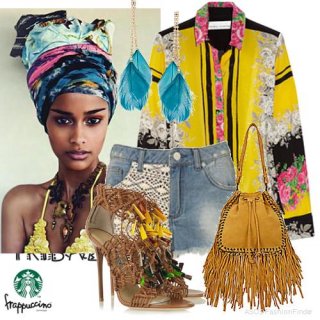
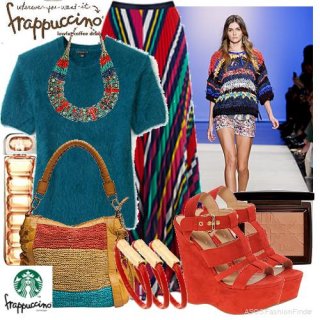
The ethnic wardrobe includes several styles - Greek, African, Russian, Indian and Egyptian. Each of these motifs has specific details and shoes, making each style unique.
Footwear and accessories in ethno style
Ethnic style clothes are combined with ethnic shoes. Usually these are products from genuine leather, made on a flat sole or on small heels. These are shoes of predominantly primitive models, copying the shoes of various peoples of the world.
Shoes are designed to emphasize the image and not go beyond it. Today, for example, moccasins are popular, and these shoes belonged to the Indians. Moccasins are also a wardrobe item that belongs to the ethnic style.
Centuries-old history shows that any human association that lives for a long time in a single space necessarily creates its own social foundations. Traditions and customs, as a rule, are reflected in the national decoration. Depending on climatic conditions, territorial features and other reasons, people acquire different habits and their own special way of dressing. The ethnic style of clothing has retained the ability to reproduce the typical features of the national costume in the wardrobe of a modern person.
A Brief Journey into History
Ethnicity - what is it? Literally translated from Greek language the word means “people, tribe.” Origins fashion trend have their roots in those distant times when clothing was seen solely as a form of protection from the elements.
Later, national decorations began to express social status person and his family affiliation. Various decorations and patterned embroideries served as ritual accessories that protected against evil forces.
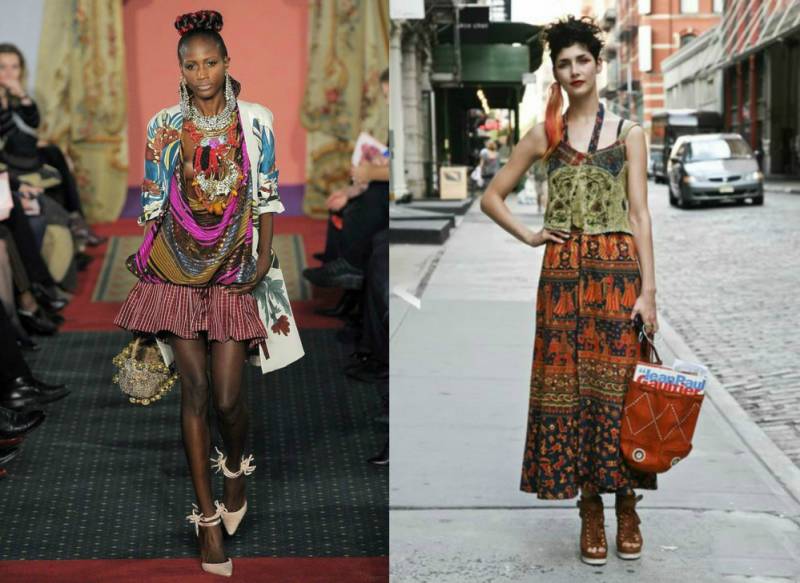
Over time, the world has become a large number of national costumes. Despite the diversity, everyone was united common features style:
- practical style of clothing - allows you to rationally use fabric;
- loose cut - provides convenience and comfort in any living and working conditions;
- bright color palette;
- a wide range of decorative elements.
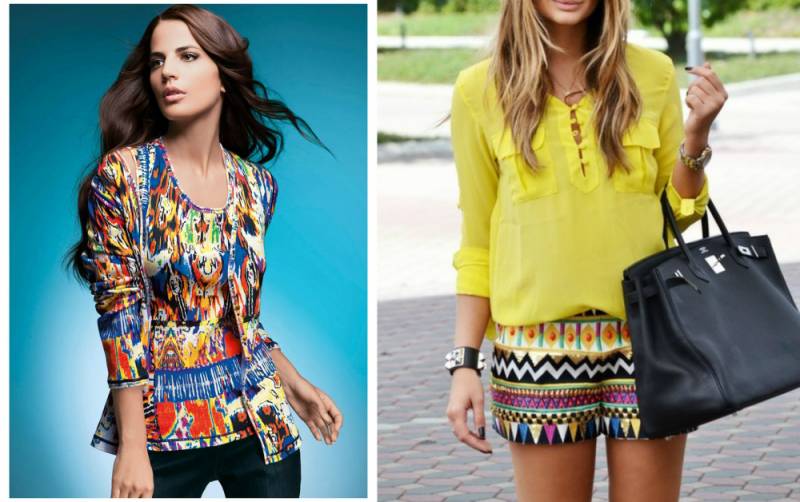
In the 20th century, the need for national clothing practically disappeared. It has become much easier and more convenient for people to buy ready-made clothes type species, than to create your own outfits. Global fashion has penetrated into every corner globe and almost completely translated folk costumes in the category of museum exhibits.
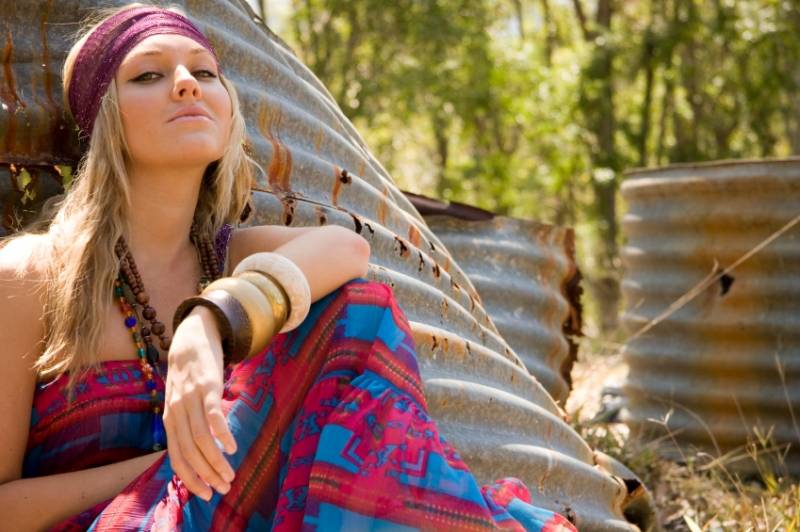
Thanks to the “flower children” in the seventies, interest in national traditions in clothing revived again. Hippies actively used decorative elements, contrasting colors and loose fit in their wardrobe.

Before today ethnic clothing style has retained its relevance. IN different time there is a deep interest in the traditions of certain nationalities. Sometimes fashion designers combine the most successful elements into a national image. Thanks to fantasy ideas, the style lives and develops, highlighting individual trends.
Stylistic characteristics of some directions: features, photos
Russian character
Clothes are made from simple natural fabrics, trimmed with velvet, fur, beads, buttons, and stones. Printed fabrics with plant, floral, and geometric themes are actively used. The most noticeable colors of the outfits are white, red, blue, green, gold, and black.
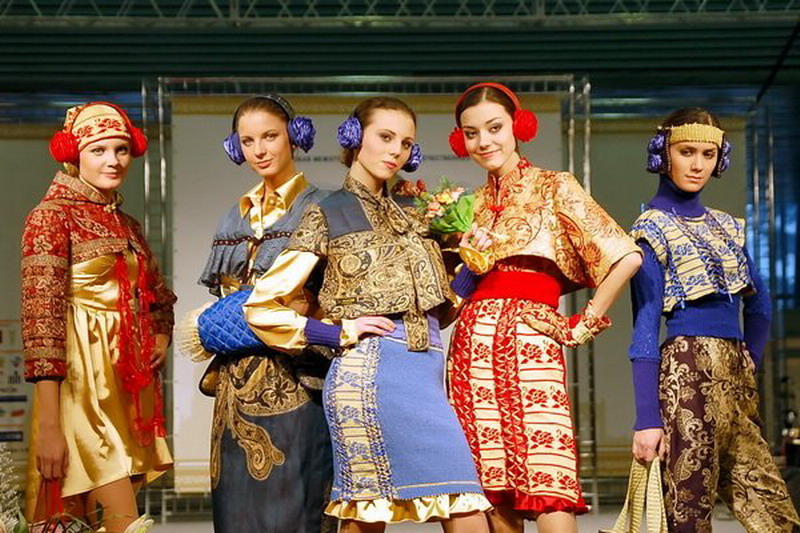
Women's models feature a loose A-line silhouette. Are considered fashionable Long Dresses, sundresses, flared skirts. The hemlines are richly decorated with bright embroidery and printed designs. The Russian style is characterized by vests, jackets, jackets decorated with fur trim. They are fastened with buttons or worn saddle-stitched.
Men's clothing in ethnic style includes shirts embroidered with ornaments and belted with a bright sash. Also different characteristic appearance uniforms, jackets with stand-up collars, loose-fitting trousers.
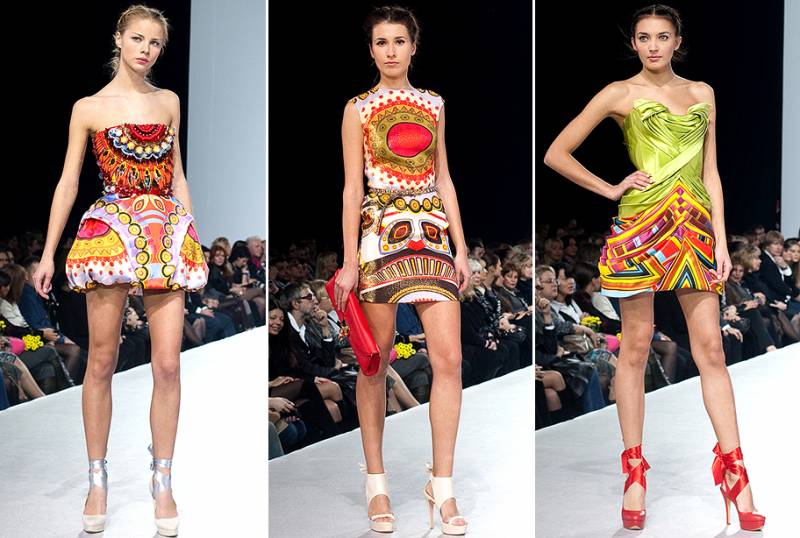
Women's and men's wardrobes cannot do without fur coats from natural fur. For sewing, the skins of ermine, silver fox, sable, and fox are used. Fur coats are additionally decorated with brocade, satin, and velvet trim.
Accessories include beads, bracelets, pendants made of wood and leather. Textile bags embroidered with beads, patterned belts, and mittens with fur are also popular. Women tie colorful scarves and bright scarves around their heads. Men wear caps and hats with ear flaps.
Mystical India
The typical colors of the style are warm. Among them are red, crimson, orange, gold, pink, olive, turquoise. The patterns on the fabric are oriental paisley patterns or various geometric shapes. Clothes are made from silk, satin, linen, cotton, and chiffon. Decorated with bead embroidery, fringe, and stones.
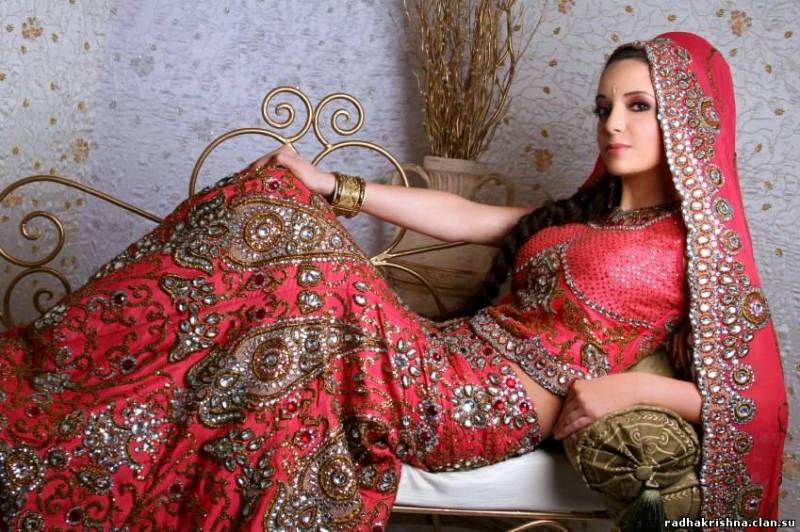
Typical women's clothing in ethnic style is a multi-layered sari outfit, dresses made of flowing fabrics, and long skirts. Bloomers with tops and long tunics are also popular. The men's wardrobe includes knee-length frock coats, long shirts, and straight trousers.
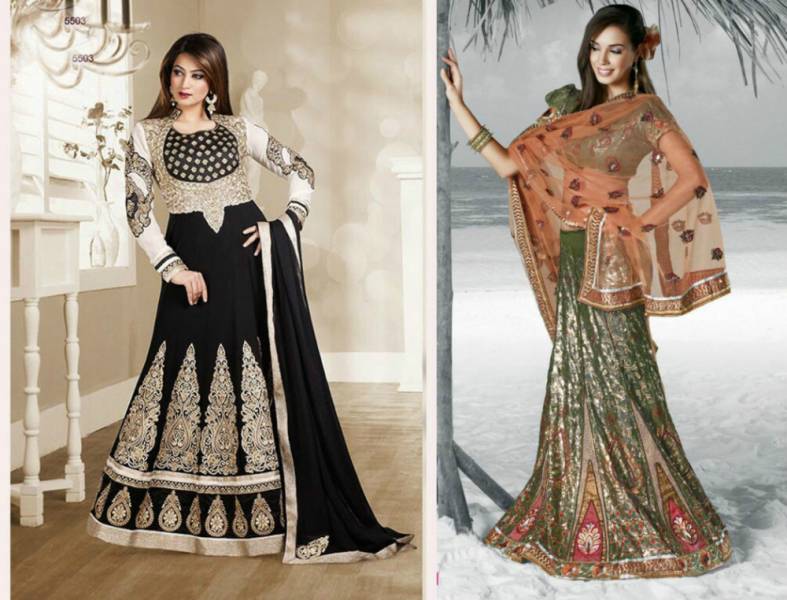
Indian style is characterized by large bright decorations. Made of metal, beads, semi-precious stones They make beads, necklaces, bracelets, long earrings, and rings. Women also decorate their noses with piercings. The image must include bright makeup. Hair is worn loose or tied up in a tight bun.
Hot Africa
Popular colors of outfits follow the shades of nature. There is also a lot of black paint, which serves as a background for various images. The fabric contains drawings of geometric shapes, floral arrangements, and animalistic subjects. Clothes are made from cotton, linen, and silk fabrics. Leather and wool materials are also popular. Finished products are decorated with fringe, fur, feathers, and animal claws.
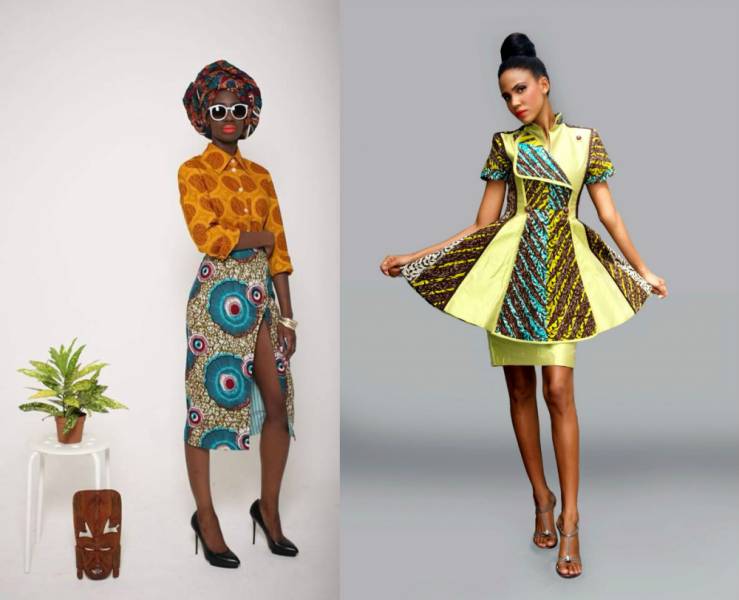
In African fashion there are practically no items made from plain fabrics. For girls, we offer skirts, dresses, sundresses of simple cut and arbitrary length. Clothes are often draped completely or in separate places. The men's wardrobe features simple trousers and shirts, suede jackets, complemented by fur trim.
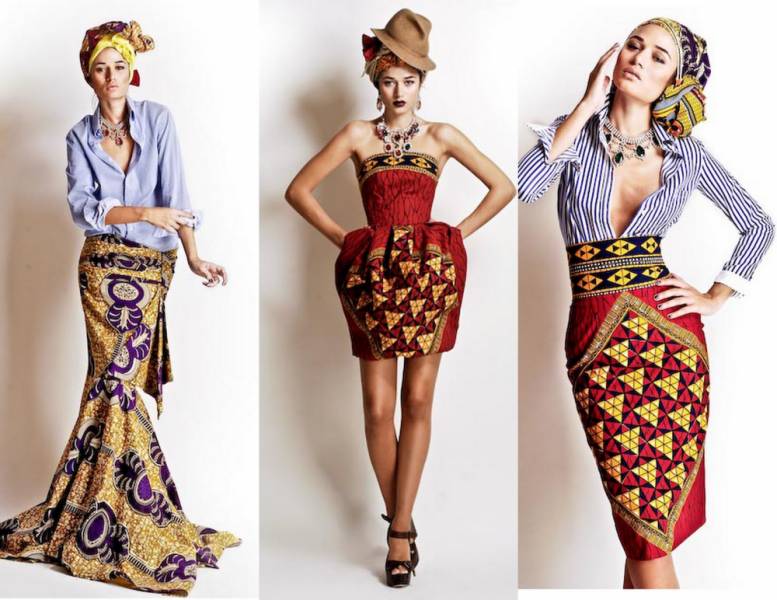
Numerous decorations are massive. They are made from metal, wood, leather. A striking feature of the style are multiple braids and bouffant hairstyles that imitate slight negligence. They wear scarves and headbands on their heads, and wear sandals and wedge shoes on their feet.
Mysterious Egypt
The style is based on a variety of colors, among which the most common are gold, white, yellow, blue, turquoise, and red. The designs on the fabrics are images of hieroglyphs, pharaohs, pyramids, and animal images. Sewing materials are exclusively of natural origin. Most often it is thin linen, because climatic features Egypt was allowed to grow it all year round. They decorate things with metal plates, embroidery, and long fringe.
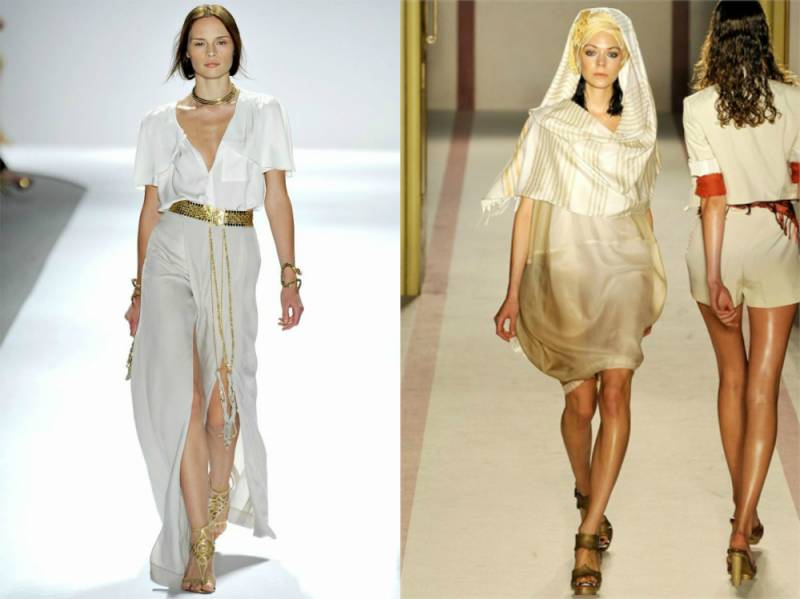
The clothes are simple and practical. Women choose long tight dresses, shorts, transparent capes, and tops. Straight trousers, loose shirts, and draped tunics are suitable for men.
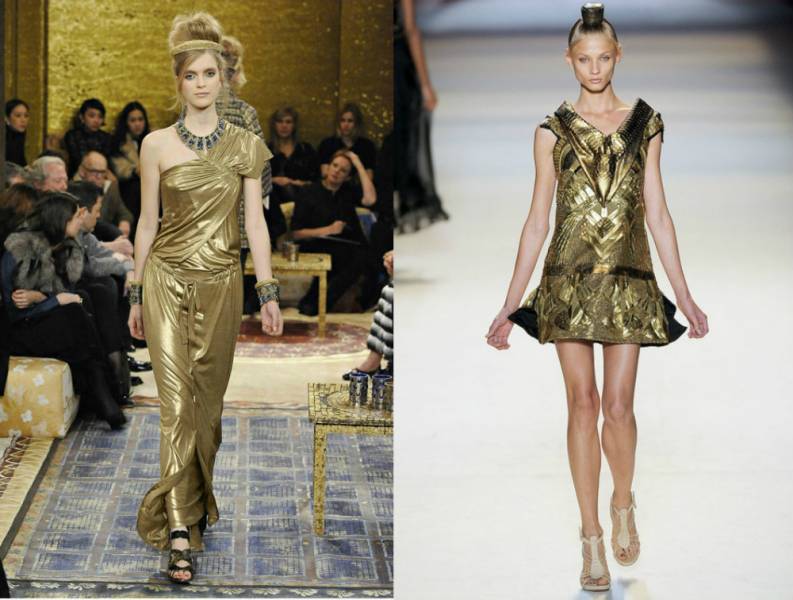
The resulting looks are complemented with a wide belt, a snake bracelet, large rings, pendants made of flat metal elements, and beads. The head is decorated with a diadem or covered with a scarf, tying it in various ways.
A few more words
In addition to the listed trends in ethnic fashion, there are a huge number of different trends in the world. The main thing in creating an ensemble is considered to be the basic cut of the outfits, the quality of the material, characteristic patterns, typical colors and various accessories. To indicate belonging to a fashion trend, it is enough to identify your image with two or three elements of national character.
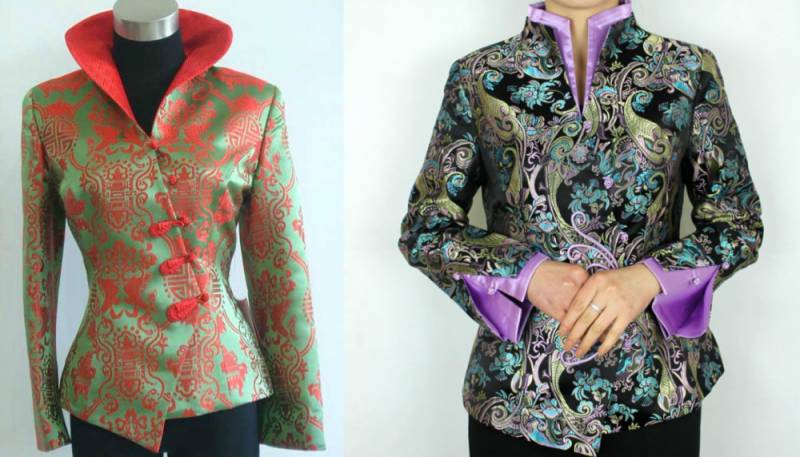
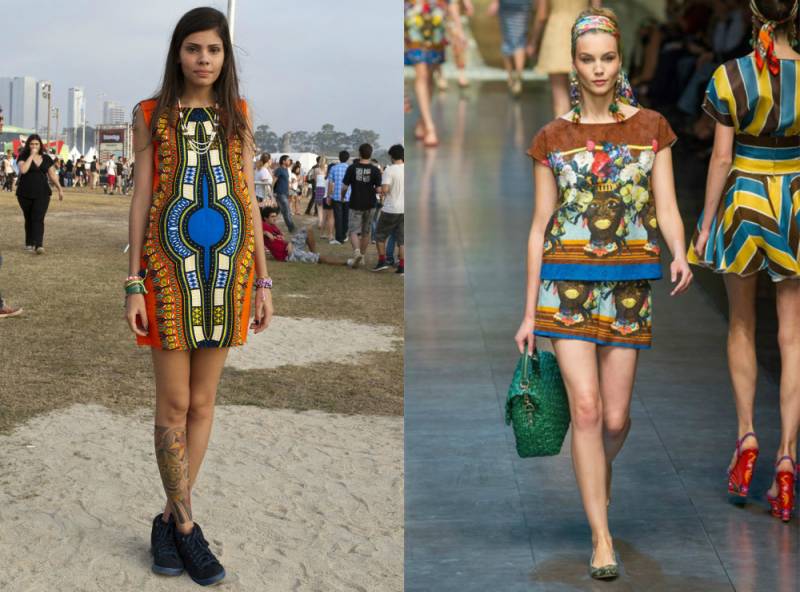
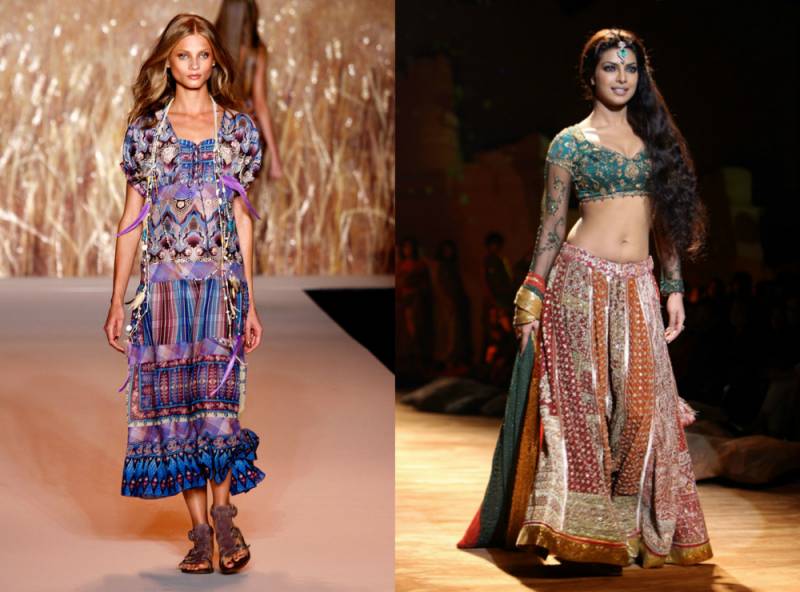
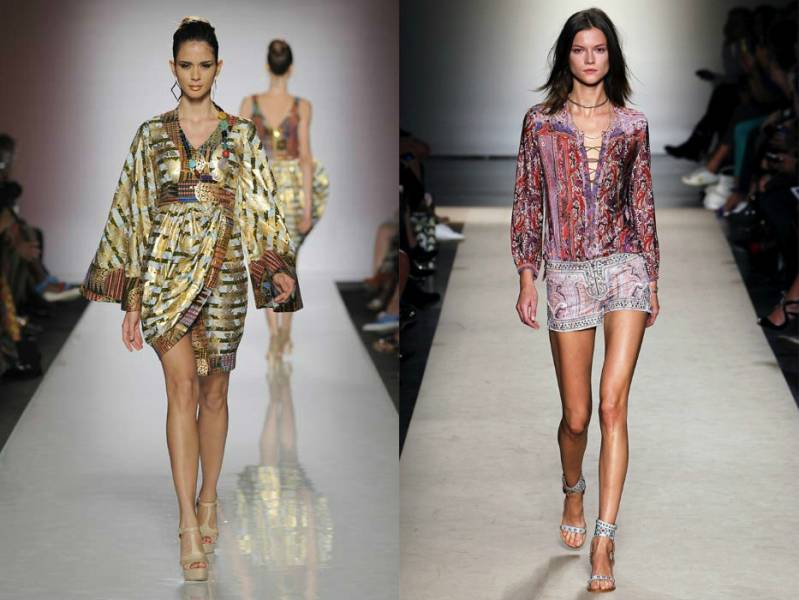
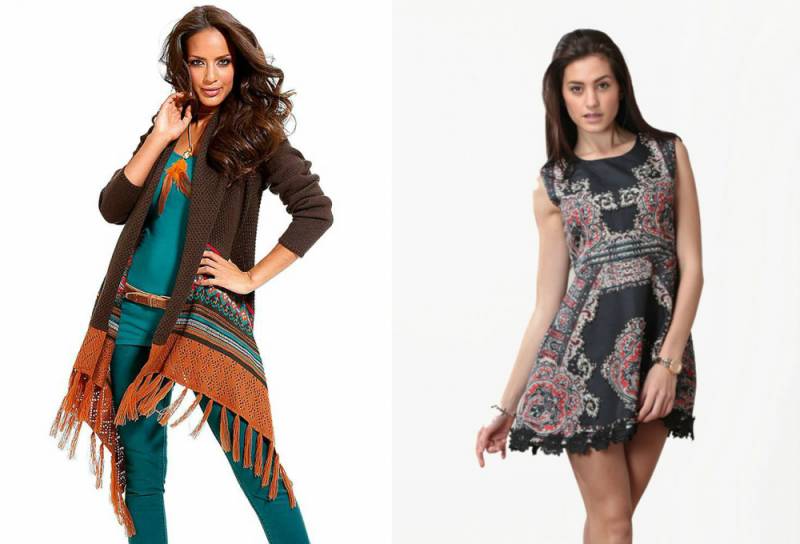
![]()
